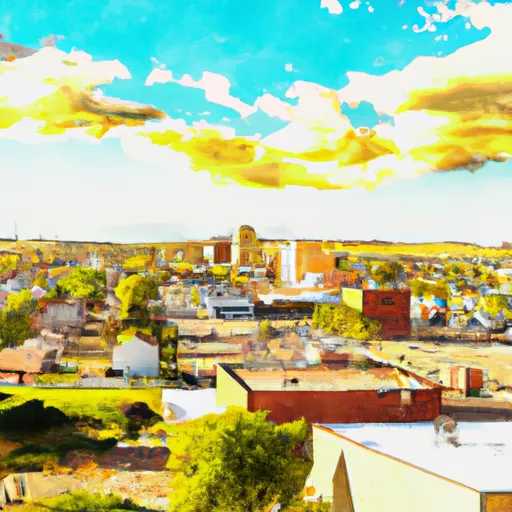-
 Snoflo Premium
Snoflo Premium
Get unlimited access to all our content
With no Ad interruptions! - Start Your Free Trial Login with existing account
Scottsbluff
Eden Index
Climate
8.3
•
Recreation
6.3
•
Community
2.8
•
Safeguard
6.2/10

Scottsbluff, Nebraska is a charming city located in the western part of the state. It experiences a semi-arid climate with hot summers and cold winters. Summers bring average temperatures around 88°F (31°C), while winters can drop to an average low of 15°F (-9°C). The area receives about 16 inches of precipitation annually, with most of it occurring during the summer months.
Hydrologically, Scottsbluff is influenced by the nearby North Platte River, which provides water for irrigation and agriculture in the region. The river also offers opportunities for recreational activities such as fishing, boating, and kayaking.
Outdoor enthusiasts will find various recreational opportunities in and around Scottsbluff. The Scotts Bluff National Monument is a popular destination for hiking, bird watching, and enjoying breathtaking views of the surrounding landscape. The nearby Wildcat Hills State Recreation Area offers camping, hiking, and wildlife viewing opportunities. The Riverside Discovery Center is a favorite among families, featuring a zoo and interactive exhibits.
In conclusion, Scottsbluff, Nebraska offers a semi-arid climate, influenced by the North Platte River, and provides outdoor recreation opportunities such as hiking, fishing, and wildlife viewing.
What is the Eden Index?
The Snoflo Eden Index serves as a comprehensive rating system for regions, evaluating their desirability through a holistic assessment of climate health, outdoor recreation opportunities, and natural disaster risk, acknowledging the profound impact of these factors on livability and well-being.
Climate Health Indicator (CHI): 8.3
Scottsbluff receives approximately
376mm of rain per year,
with humidity levels near 72%
and air temperatures averaging around
9°C.
Scottsbluff has a plant hardyness factor of
5, meaning
plants and agriculture in this region thrive during a short period during spring and early summer. Most
plants will die off during the colder winter months.
By considering the ideal temperature range, reliable water supplies, clean air, and stable seasonal rain or snowpacks, the Climate Health Indicator (CHI) underscores the significance of a healthy climate as the foundation for quality living.
A healthy climate is paramount for ensuring a high quality of life and livability in a region, fostering both physical well-being and environmental harmony. This can be characterized by ideal temperatures, reliable access to water supplies, clean air, and consistent seasonal rain or snowpacks.
Weather Forecast
Streamflow Conditions
North Platte
Area Rivers
North Platte
Snowpack Depths
North Platte
Reservoir Storage Capacity
North Platte
Groundwater Levels
Recreational Opportunity Index (ROI): 6.3
The Recreational Opportunity Index (ROI) recognizes the value of outdoor recreational options, such as parks, hiking trails, camping sites, and fishing spots, while acknowledging that climate plays a pivotal role in ensuring the comfort and consistency of these experiences.
Access to outdoor recreational opportunities, encompassing activities such as parks, hiking, camping, and fishing, is crucial for overall well-being, and the climate plays a pivotal role in enabling and enhancing these experiences, ensuring that individuals can engage in nature-based activities comfortably and consistently.
Camping Areas
| Campground | Campsites | Reservations | Toilets | Showers | Elevation |
|---|---|---|---|---|---|
| Robidoux RV Park | 40 | 3,989 ft | |||
| Oliver Reservoir State Rec Area | 175 | 4,812 ft | |||
| Gotte Park | None | 4,715 ft | |||
| Wildcat Hills State Rec Area | 30 | 4,527 ft | |||
| Riverside Park - Terrytown | 45 | 3,882 ft | |||
| Soldier Creek | 28 | 4,108 ft | |||
| Zeigler Park - Mitchell | 4 | 3,946 ft | |||
| Fort Robinson State Park | 125 | 3,806 ft | |||
| Lake Minatare State Rec Area | 160 | 4,138 ft | |||
| Scenic Knolls City Golf Course and Campground | 6 | 4,060 ft |
Nearby Fishing
Catastrophe Safeguard Index (CSI):
The Catastrophe Safeguard Index (CSI) recognizes that natural disaster risk, encompassing floods, fires, hurricanes, and tornadoes, can drastically affect safety and the overall appeal of an area.
The level of natural disaster risk in a region significantly affects safety and the overall livability, with climate change amplifying these risks by potentially increasing the frequency and intensity of events like floods, fires, hurricanes, and tornadoes, thereby posing substantial challenges to community resilience and well-being.
Community Resilience Indicator (CRI): 2.8
The Community Resilience Indicator (CRI) recognizes that education, healthcare, and socioeconomics are crucial to the well-being of a region. The CRI acknowledges the profound impact of these elements on residents' overall quality of life. By evaluating educational resources, healthcare accessibility, and economic inclusivity, the index captures the essential aspects that contribute to a thriving community, fostering resident satisfaction, equity, and social cohesion.

